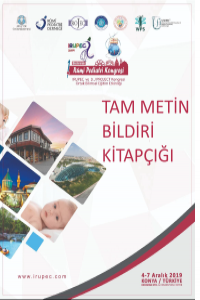Abstract
References
- References 1 Bocquet H, Boagot M, Roujeau JC. Drug‐induced pseudolymphoma and drug hypersensitivity (Drug rash with eosinophilia and systemic symptoms: DRESS). SeminCutan Med Surg 1996;15(4):250–7. 2 Husain Z, Reddy BY, Schwartz RA. DRESS syndrome: Part I. Clinical perspectives. J Am AcadDermatol 2013;68(5):693. 3 Cacoub P, Musette P, Descamps V, Meyer O, Speirs C, Finzi L, et al. The DRESS syndrome: A literature review. Am J Med 2011;124:588–97. 4 Yang CY, Dao RL, Lee TJ et al: Severe cutaneous adverse reactions to antiepileptic drugs in Asians. Neurology 2011;77:2025‐33. 5 Botelho LF, Higashi VS, Padilha MH, Enokihara MM, Porro AM. DRESS: clinic pathological features of 10 cases fromanUniversity Hospital in São Paulo. An Bras Dermatol 2012;87:703‐7. 6 Kardaun SH, Sidoroff A, Valeyrie-Allanore L, et al. Variability in the clinical pattern of cutaneous side-effects of drugs with systemic symptoms: Does a DRESS syndrome really exist? Br J Dermatol 2007;156:609–11. 7 Cardoso CS, Vieira AM, Oliveira AP. DRESS syndrome: a case report and literature review. BMJ Case Rep. 2011 Jun 3;2011. 8 Criado PR, Criado RFJ, Avancini JM, Santi CG. Drug Reaction with Eosinophilia and Systemic Symptoms (DRESS)/ Drug‐Induced Hypersensitivity Syndrome (DIHS): a review of current concepts. An Bras Dermatol 2012;87:435‐49.
Abstract
DRESS (Drug Reaction with Eosinophilia and Systemic Symptoms) syndrome is a rare, life-threatening, delayed type drug reaction characterized by fever, skin rash, hematologic changes (eosinophilia, atypical lymphocytes), lymphadenopathy and involvement of the internal organs (liver, kidney, heart). It was first described associated with phenytoin but aromatic anticonvulsants and sulfonamides are the most common ones. The diagnosis of DRESS syndrome is made according to the clinician's decision with the scoring systems (Bocquet, J-SCAR, RegiSCAR) consisting of certain clinical and laboratory findings. The main criterias for these scores are fever, skin rash, eosinophilia and internal organ involvement.
Case: A 7-year-old male patient with ongoing investigations in our pediatric neurology outpatient clinic due to Lennox-Gastaut syndrome, mental-motor retardation and syndromic appearance was admitted with 39°C fever and rash on his body for 2 days. Our patient diagnosed with epilepsy had received antiepileptic treatment since he was one year old and it was learned that phenytoin was added to his current treatment because he had generalized tonic-clonic seizures 11 days before the admission. In the history of our case, there was a second‐degree consanguinity between the mother and father. In physical examination; body weight was 16.5kg (<3p), height was 100 cm (<3p), head circumference was 48 cm (<3p). He had a syndromic facial appearance (retro-micrognathia, flat nasal bridge), leukocoria, small hands and foots, and a simian line in the right hand. There were diffuse millimetric maculopapular rashes on the body and a left cervical lymph node (1 x 1 cm). In laboratory examinations; hemoglobin was 13.1 gr/dL, leukocyte was 9710/mm³, platelet was 266000/mm³, total eosinophil count was 880/mm³, AST was 82 IU/L, and ALT was 45 IU/L. Phenytoin of our case, who was considered to have phenytoin-induced DRESS syndrome according to the RegiSCAR diagnostic criteria, was discontinued and the rash, eosinophilia and transaminase values were decreased within 3 days after starting antihistaminic and steroid treatment.
Conclusion: DRESS syndrome is a rare but life-threatening progressive condition and early diagnosis and timely treatment are life-saving. We present our case to emphasize the importance of questioning the history of drug use in patients presenting with fever and rash, and the necessity of keeping in mind the diagnosis, triggers and treatment of DRESS syndrome.
Keywords
References
- References 1 Bocquet H, Boagot M, Roujeau JC. Drug‐induced pseudolymphoma and drug hypersensitivity (Drug rash with eosinophilia and systemic symptoms: DRESS). SeminCutan Med Surg 1996;15(4):250–7. 2 Husain Z, Reddy BY, Schwartz RA. DRESS syndrome: Part I. Clinical perspectives. J Am AcadDermatol 2013;68(5):693. 3 Cacoub P, Musette P, Descamps V, Meyer O, Speirs C, Finzi L, et al. The DRESS syndrome: A literature review. Am J Med 2011;124:588–97. 4 Yang CY, Dao RL, Lee TJ et al: Severe cutaneous adverse reactions to antiepileptic drugs in Asians. Neurology 2011;77:2025‐33. 5 Botelho LF, Higashi VS, Padilha MH, Enokihara MM, Porro AM. DRESS: clinic pathological features of 10 cases fromanUniversity Hospital in São Paulo. An Bras Dermatol 2012;87:703‐7. 6 Kardaun SH, Sidoroff A, Valeyrie-Allanore L, et al. Variability in the clinical pattern of cutaneous side-effects of drugs with systemic symptoms: Does a DRESS syndrome really exist? Br J Dermatol 2007;156:609–11. 7 Cardoso CS, Vieira AM, Oliveira AP. DRESS syndrome: a case report and literature review. BMJ Case Rep. 2011 Jun 3;2011. 8 Criado PR, Criado RFJ, Avancini JM, Santi CG. Drug Reaction with Eosinophilia and Systemic Symptoms (DRESS)/ Drug‐Induced Hypersensitivity Syndrome (DIHS): a review of current concepts. An Bras Dermatol 2012;87:435‐49.
Details
| Primary Language | English |
|---|---|
| Subjects | Health Care Administration |
| Journal Section | Congress Proceedings |
| Authors | |
| Publication Date | December 10, 2019 |
| Acceptance Date | January 16, 2020 |
| Published in Issue | Year 2019 Volume: 7 Issue: Ek - IRUPEC 2019 Kongresi Tam Metin Bildirileri |


